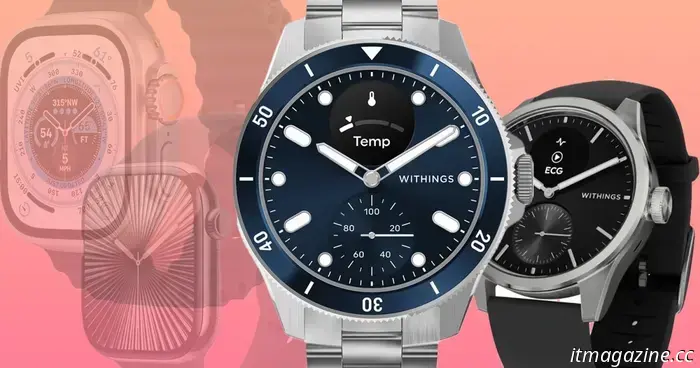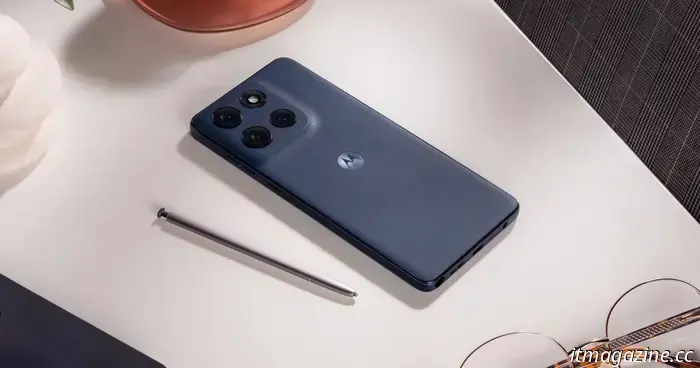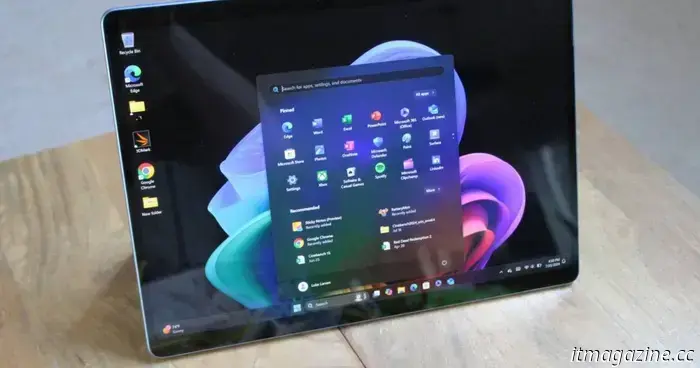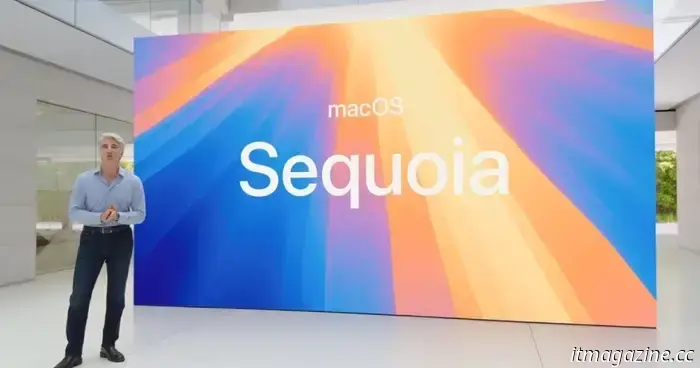
Hybrid smartwatches could lead me to permanently switch from my Apple Watch.
I have owned both versions of the Apple Watch Ultra and, prior to that, every iteration in the Apple Watch Series, beginning with the original in 2015. After extensively evaluating the Withings ScanWatch Nova Brilliant over the past few weeks, I've come to an unexpected realization: I might never buy another Apple Watch again.
Let me clarify. As an enthusiast of exploring new gadgets and, more importantly, as someone who regularly writes about them, it’s likely that I will purchase the Apple Watch Ultra 3 when it launches later this year. However, at this moment, I feel less assured than I did previously about traditional smartwatches being the optimal choice. Instead, I'm starting to believe that hybrid smartwatches may be a more favorable option for the everyday consumer.
Make no mistake, Apple Watches and similar devices from companies like Samsung, Google, and others have revitalized the watch industry.
For many years, watches maintained a consistent design, whether we’re talking about high-end brands like Rolex and Omega or more budget-friendly options like Swatch. While most everyday timepieces remained analog, digital watches have also been a popular selection for decades.
The advent of smartwatches has placed multifunctional gadgets on our wrists, resulting in a surge in watch popularity. These devices now track health, fitness, and activity data. They keep us informed with weather updates, calendar reminders, notifications, and messages. Moreover, they allow us to control music playback, make and receive phone calls, interact with voice assistants, conduct mobile payments, and much more. Additionally, we have the option to change the watch faces each day, hour, or minute to reflect our personal style.
However, this feels increasingly excessive, particularly as it has become evident that smartwatches won't be replacing our phones any time soon.
Why I appreciated smartwatches and then became disillusioned
Some might not recognize this, but the launch of the first Apple Watch was significant. Unveiled at a major event at the Flint Center for the Performing Arts in Cupertino, California, in September 2014 alongside the iPhone 6 and iPhone 6 Plus, it was a major highlight in Apple’s showcase of "one more things." When the Apple Watch Series 0 was released the following spring, it comprised three collections: Apple Watch Sport, Apple Watch, and Apple Watch Edition, with prices ranging from $349 to $17,000 for the gold Edition models.
Despite their steep prices, the initial Apple Watches were rather basic when compared to later versions, but their novelty made a considerable impact. Initially, Apple focused on the fitness aspects of the watch. However, as new features like blood oxygen saturation (SpO2) monitoring, ECG/EKG tracking, and sleep analysis were introduced, the emphasis shifted toward the watches’ overall health capabilities. Throughout the years, Apple added new watch faces and occasionally hardware enhancements like the customizable Action Button on the Apple Watch Ultra.
Over time, I’ve grown increasingly mindful of various issues with Apple Watches that I can no longer overlook. It’s worth mentioning that my concerns apply not only to Apple's wearables; I've also experienced Google’s Pixel Watches, which share similar features and drawbacks. My frustration began with their consistently poor battery life, which has seen little improvement over time. For instance, the Apple Watch Series models still only provide 18 hours between charges, which is half the battery duration of the Apple Watch Ultra.
Additionally, I've experienced a rising anxiety linked to the continual need to check the Apple Watch display for time and notifications. It has become almost routine to glance at my wrist several times an hour, feeling compelled to remain connected and informed. This relentless checking is often paired with an unhealthy urge to explore every feature, from tracking workouts to heart rate monitoring, which can sometimes feel overwhelming.
Moreover, I can't ignore the pressure associated with the annual upgrade cycle that occurs every fall when new Apple Watches are unveiled. The buzz in the air is palpable, yet it also introduces an underlying stress about keeping pace with the latest technology. There's a persistent feeling that I should upgrade to the newest model to take advantage of the latest features and enhancements, which contributes to the overall pressure of managing my device use. It's an ongoing battle between the desire to stay current and the recognition that this technology can sometimes be more of a burden than a boon.
The emergence of hybrids
Hybrid smartwatches have been around for several years, with early models like the Withings Activité and the Fossil Q Grant paving the way prior to the first Apple Watch release. These models successfully merged the classic look of traditional wristwatches with contemporary technology, providing notification alerts and basic fitness tracking while maintaining style.
For a long time, hybrid watches lagged behind full-fledged smartwatches in terms of features and functions. However, this pattern gradually changed as manufacturers began to integrate more advanced capabilities into hybrid models—many of which surpassed the features of popular smartwatches like the Apple Watch. Significant improvements include greatly






Other articles
 Switch 2 vs. Switch Lite: is the upgrade justifiable considering the high cost?
The Switch Lite provided an excellent, affordable option to enjoy the complete Switch experience, albeit with a few trade-offs. Does the Switch 2 present sufficient new features to warrant its cost?
Switch 2 vs. Switch Lite: is the upgrade justifiable considering the high cost?
The Switch Lite provided an excellent, affordable option to enjoy the complete Switch experience, albeit with a few trade-offs. Does the Switch 2 present sufficient new features to warrant its cost?
 Moto G Stylus 2025 makes its debut to entice potential Galaxy S25 Ultra customers.
Motorola has unveiled the Moto G Stylus 2025, aiming to attract potential buyers of the Galaxy S25 Ultra.
Moto G Stylus 2025 makes its debut to entice potential Galaxy S25 Ultra customers.
Motorola has unveiled the Moto G Stylus 2025, aiming to attract potential buyers of the Galaxy S25 Ultra.
 The trailer for the animated film Predator: Killer of Killers has been released, along with its Hulu launch date.
20th Century Studios has released the trailer and announced the release date for Predator: Killer of Killers, the upcoming animated film set in the Predator universe.
The trailer for the animated film Predator: Killer of Killers has been released, along with its Hulu launch date.
20th Century Studios has released the trailer and announced the release date for Predator: Killer of Killers, the upcoming animated film set in the Predator universe.
 Looking for a Copilot+ PC? Check out the Microsoft Surface Pro 11 — now $450 off.
The Microsoft Surface Pro 11, designed as a Copilot+ PC to fully utilize the AI assistant, is currently available at Best Buy with a discount of $450.
Looking for a Copilot+ PC? Check out the Microsoft Surface Pro 11 — now $450 off.
The Microsoft Surface Pro 11, designed as a Copilot+ PC to fully utilize the AI assistant, is currently available at Best Buy with a discount of $450.
 WWDC might not provide the macOS enchantment I hope for. Here’s the reason.
Apple's WWDC event is likely to focus heavily on Apple Intelligence, but I'm concerned that this could lead to macOS lacking appealing new features.
WWDC might not provide the macOS enchantment I hope for. Here’s the reason.
Apple's WWDC event is likely to focus heavily on Apple Intelligence, but I'm concerned that this could lead to macOS lacking appealing new features.
Hybrid smartwatches could lead me to permanently switch from my Apple Watch.
Find out why hybrid smartwatches could be the ideal substitute for your conventional smartwatch!
